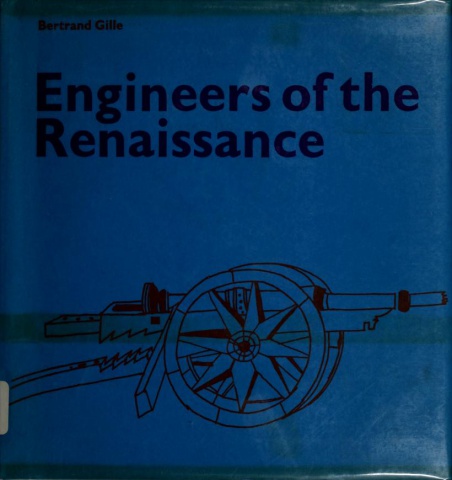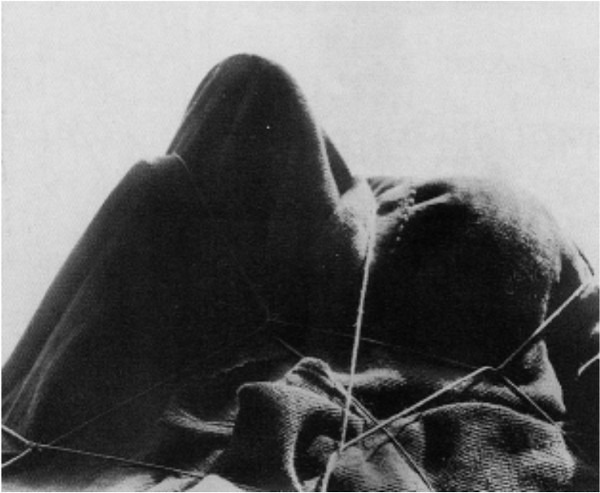Bertrand Gille: Engineers of the Renaissance (1964–) [French, English]
Filed under book | Tags: · art, art history, engineering, history of science, history of technology, machine, mechanics, renaissance, science, technology

“In his reconstruction of Renaissance technology informed by research into little-known manuscripts from libraries across Europe, Bertrand Gille emphasises the close continuity of technical invention from antiquity (in particular, the Alexandrian Greeks), through the mediaeval period (in particular, the Germans), to its brief but brilliant high flaring among the Italians of the fifteenth century. The engineers were conscious of embodying the Archimedean tradition, the tradition of “give me a place to stand and I can move the world.” It was an age marked by a close and natural mutuality between the technical and the fine arts, and by the first real union of science and technology, whose issue was a permanent enrichment of both. Science gave to engineering a new sophistication of mathematical precision, and the working models constructed for mechanical inventions prepared the way for a truly experimental science, as later developed by the generation of Galileo.
As might be expected, the figure of Leonardo da Vinci looms large in this book. It is the author’s contention, based on the documents he has uncovered, that Leonardo’s originality as an engineer has been greatly overestimated, that in fact he borrowed and adapted freely from the work of this anonymous and little-known contemporaries, that many of his ideas are already prefigured in the mediaeval period. Nevertheless, although he rests on the foothills leading up to him, he still towers above them as the consummate technical artist.”
Publisher Hermann, Paris, 1964
239 pages
English edition
Publisher MIT Press, 1966
256 pages
Reviews: Alex Keller (Technology and Culture, 1965), Harry Woolf (Science, 1968), M. Daumas (Revue d’Histoire des sciences et de leurs application, 1964, FR).
Wikipedia (FR)
Les ingénieurs de la Renaissance (French, 1964, 8 MB, added on 2018-12-27)
Engineers of the Renaissance (English, 1966, 8 MB, updated on 2018-12-27)
Sensate: A Journal for Experiments in Critical Media Practice (2012-)
Filed under journal | Tags: · archive, art, digital humanities, ethnography, film, history of technology, media archeology, media art, photography, sensory ethnography, sociology, sound, video, visual anthropology

Sensate is a peer-reviewed, issueless, open-access, media-based journal for the creation, presentation, and critique of innovative projects in the arts, humanities, and sciences. Its mission is to provide a scholarly and artistic forum for experiments in critical media practices that expand academic discourse by taking us beyond the margins of the printed page. Fundamental to this expansion is a re-imagining of what constitutes a work of scholarship or art.
Editors-in-Chief: Lindsey Lodhie, Peter McMurray, Joana Pimenta, and Elizabeth Watkins
Creative Commons 3.0 Attribution license
The Shape of Experiment (2006)
Filed under proceedings | Tags: · art, art history, experiment, experimental art, history of science, history of technology, science, technology

What is the result of recent studies on the history of experiment? How has our image of science been changed since Ian Hacking’s statement, “experimentation has a life of its own,” turned into a catch phrase for investigations into the history of science? What is the lesson to be drawn from the studies following Steven Shapin’s and Simon Schaffer’s Leviathan and the Air Pump (1985) and Peter Galison’s How Experiments End (1987)?
In trying to answer these questions, this conference did not aim at contributing to a more developed philosophy of scientific experimentation, nor did it try to return to the grand narratives on the history of science. Rather, the goal of this conference was to identify characteristic configurations within in the history of experimentalization from 1800 to the present. The guiding question was: what are the typical forms of experiment that emerged in the separated and shared history of science, technology, and the arts?
Conference: The Shape of Experiment, Berlin, 2-5 June 2005
Publisher Max-Planck-Institute for the History of Science, Berlin
Preprint series, No. 318
235 pages
conference (prepared by Julia Kursell, Sven Dierig, and Henning Schmidgen)
publisher

